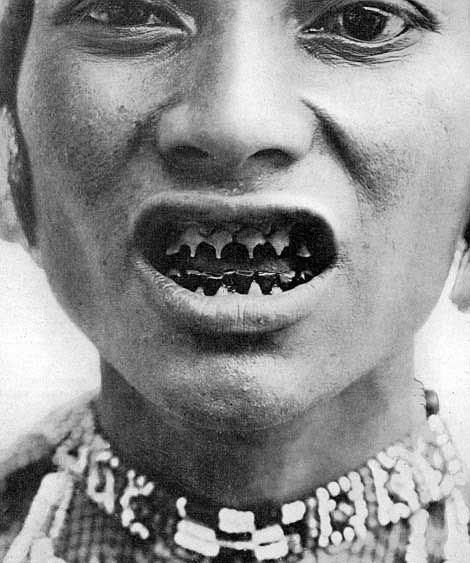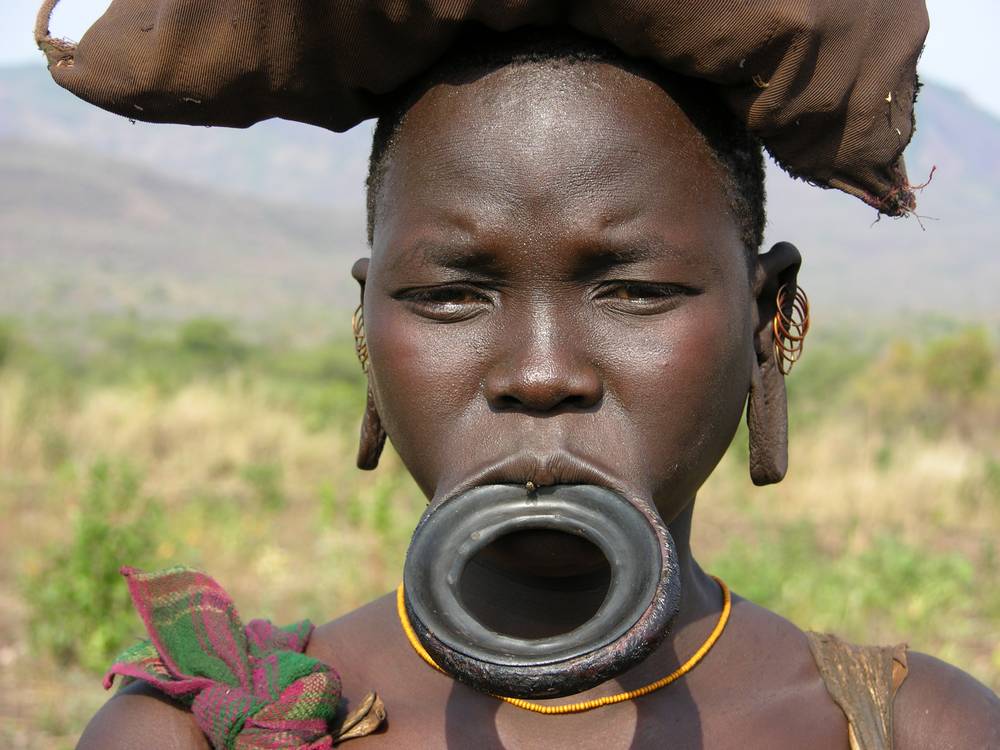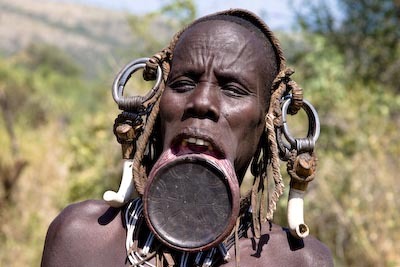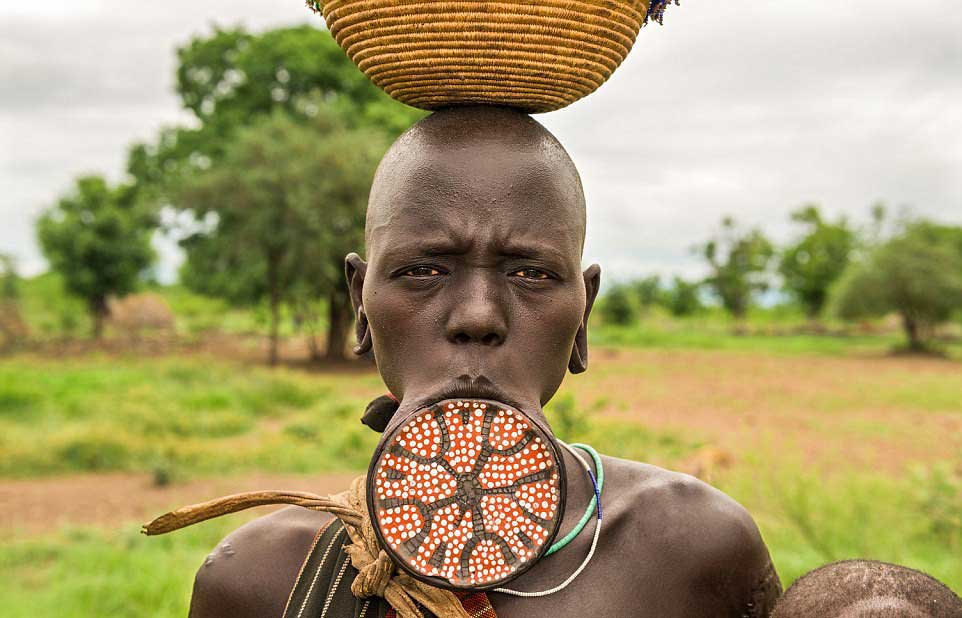African Culture Modifications

People get tattoos for many different reasons. In Africa, tattoos can
symbolize your age, social status, beliefs, religion,…etc. Some tribes such as
the Adrinka use tattoos to symbolize different traits, such as goodwill,
diplomacy, wealth, creativity, and wisdom. They can also be used for different
ceremonies, and for rites of passage.
Have you ever seen people wear gauges? Well, they also wear them in
Africa, except they’re about 15x bigger! Africans use seemingly outrageous body
modifications for beauty, religion, or rites of passage. Another popular body
modification are “lip plates”. They’re literally as big as plates! Men find them
attractive, and girls get them to find a good husband. Since lip plates aren’t
very comfortable, having one symbolizes strength and maturity. In South Africa,
another body modification is elongated necks. Brass coils are put around girls’
necks at a young age and they are stretched to very unnatural lengths.
This is
considered beautiful for women. A body modification that is not considered
beautiful are "nose plugs" that Adrinka women use. It's tradition that these women
nose plugs to actually make them "ugly" to protect them from invaders. Adrinka women
are said to be the most beautiful in the world, so they use "nose plugs" so they don't
get kidnapped!



Human tooth sharpening is the practice of manually sharpening the teeth, usually the front incisors. Filed teeth are customary in various cultures. Many remojadas figurines found in part of Mexico have filed teeth and it is believed to have been common practice in their culture. The Zappo Zap people of the Democratic Republic of Congo are believed to have filed their teeth.
Historically it was done for spiritual purposes, with some exceptions, but in modern times it is usually aesthetic in nature as an extreme form of body modification.
Many cultures have practiced this form of body modification. In Bali, in a ritual known as Potong gigi, canine teeth were filed down because it was thought that the teeth represented anger, jealousy, and other similar negative emotions. The teeth were also sharpened as a rite of passage for adolescents. Teeth filing was also used by Aborigines for spiritual reasons, as well as assorted Vietnamese and Sudanese tribes. In Mayan culture, the teeth were sharpened, and sometimes had designs carved into them, to distinguish those in the upper-classes. Many cultures would sharpen their teeth to imitate animals, such as the Wapare of intertropical Africa, who sharpened their teeth to imitate sharks, as well as kicking out some mandibular teeth during puberty.[3] In Ancient China, a group called Ta-ya Kih-lau (????, literally ?? (Gelao people) who beat out their teeth") had every woman about to wed knock out two of her anterior teeth to "prevent damage to the husband's family." Some cultures have distinctions between which sex does what to their teeth. In the central Congo region, the Upoto tribe has men file only teeth in the maxillary arch, whereas women file both maxillary and mandibular arches. The Mentawai people have also traditionally engaged in this practice.[6]
David Livingstone mentions a number of African tribes who practice teeth-filing, including the Bemba, Yao, Makonde, Matambwe, Mboghwa and Chipeta.





